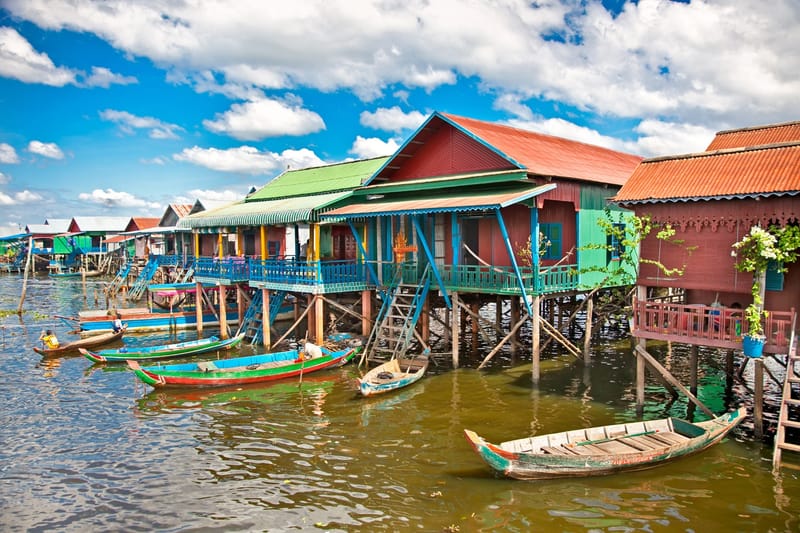Floating Village

Floating Villages are a fascinating feature of Cambodia’s landscape, particularly in the Tonle Sap Lake area, the largest freshwater lake in Southeast Asia. These villages are unique in that they are built entirely on water, with houses, schools, markets, and other structures floating on wooden platforms or anchored boats. The most famous floating villages are found near Kampong Phluk, Kampong Khleang, and Chong Kneas, all of which are located around Tonle Sap.
These villages have been built in response to the seasonal changes in water levels of Tonle Sap, which fluctuates dramatically throughout the year. During the rainy season (typically from May to October), the lake swells in size, flooding the surrounding areas, while in the dry season (November to April), the lake recedes, creating a vastly different environment. The floating villages adapt to these changes, allowing the people living there to continue their lives despite the changing water levels.
In a floating village, most homes are constructed on stilts or are simply boats that can be moved to different locations as needed. Some of the houses are simple wooden shacks, while others are more elaborate and spacious, depending on the wealth of the family. Residents rely on fishing and aquaculture for their livelihood, with many villagers fishing for food or working in the local fish farming industry.
These villages are also self-sustaining, with schools, markets, and even pagodas floating on the water. For example, in Kampong Phluk, visitors can see houses built on tall stilts that rise high above the water during the rainy season, and floating boats serve as shops where people can buy food and necessities.
Tourists visiting these floating villages often take boat rides through the villages to explore and interact with the local communities. These tours offer a unique opportunity to witness life on water, observing the local culture, fishing techniques, and the incredible adaptability of the people living in these villages.
Despite their charm and cultural richness, floating villages face challenges due to environmental changes and development pressures, which threaten their way of life. Climate change, rising water levels, and deforestation have all impacted the sustainability of these communities. However, the floating villages of Cambodia remain an extraordinary testament to human ingenuity and resilience in harmony with nature.